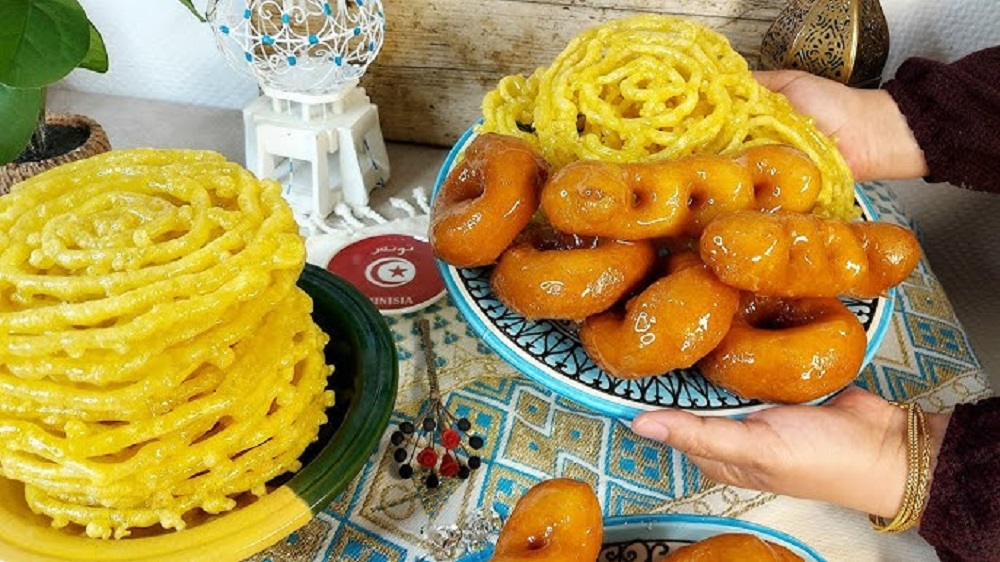Tunisian Zalabia is a traditional sweet, especially popular during Ramadan. It is made from a fermented batter of flour, yeast, and sometimes yogurt, which is piped into hot oil in spirals or intricate shapes. Once fried to a golden crisp, the Zalabia is soaked in aromatic sugar syrup infused with orange blossom water or rose water, giving it a sweet, floral taste.
This dessert is especially common in northern cities like Béja, Bizerte, and Tunis, where artisanal makers are known for their skill in creating perfectly crunchy-yet-soft Zalabia. Its popularity spikes during Ramadan evenings, often served alongside other Tunisian sweets such as makroud and bambalouni.
Zalabia’s origins trace back to the broader North African and Middle Eastern sweet-making tradition, but in Tunisia, it has developed a distinctive texture and flavor profile. The balance between crispness and syrup absorption is a mark of craftsmanship, and many family recipes have been passed down for generations.
Today, Zalabia remains a cultural symbol, often sold in markets, bakeries, and street stalls, especially during festive seasons.

